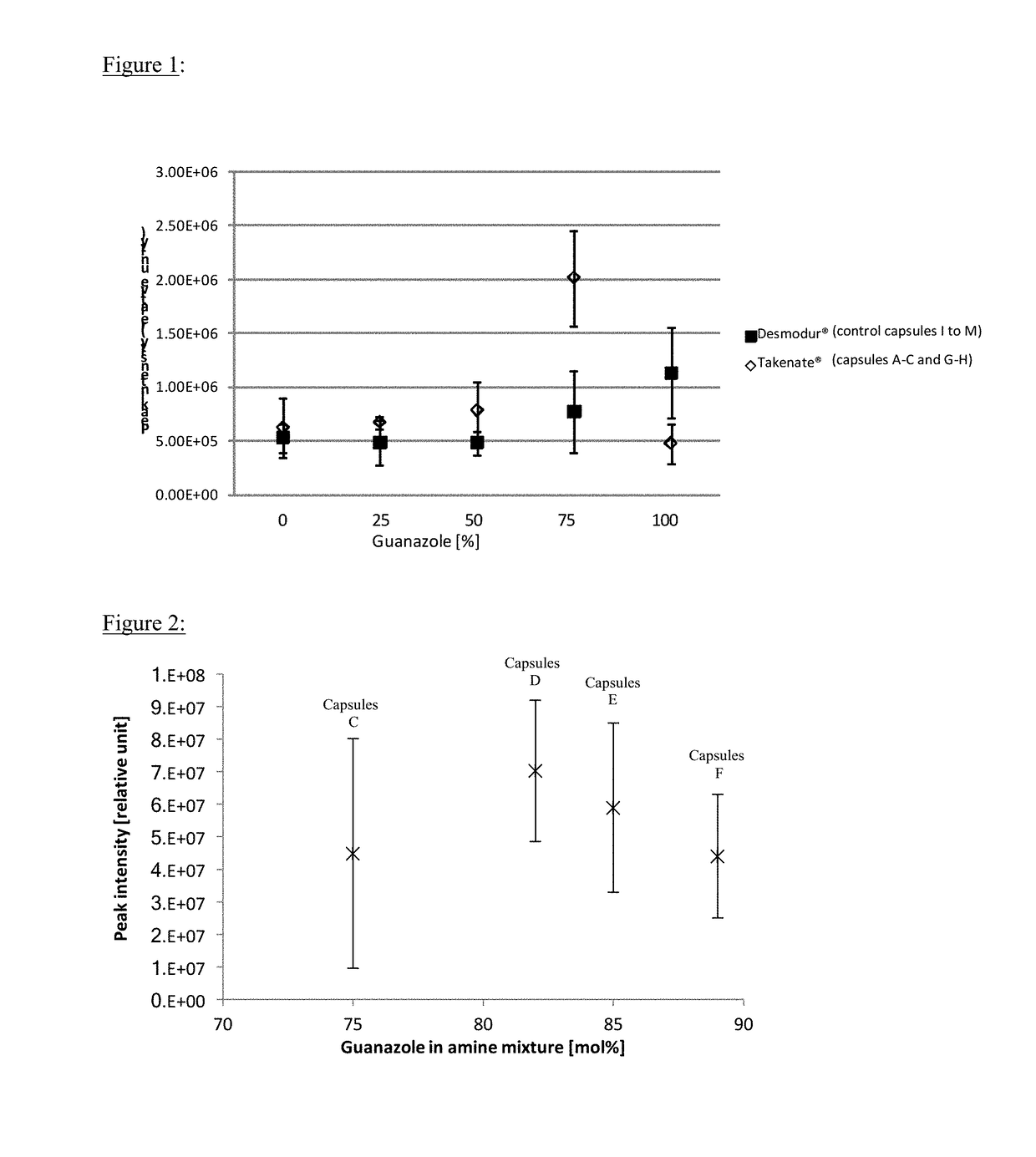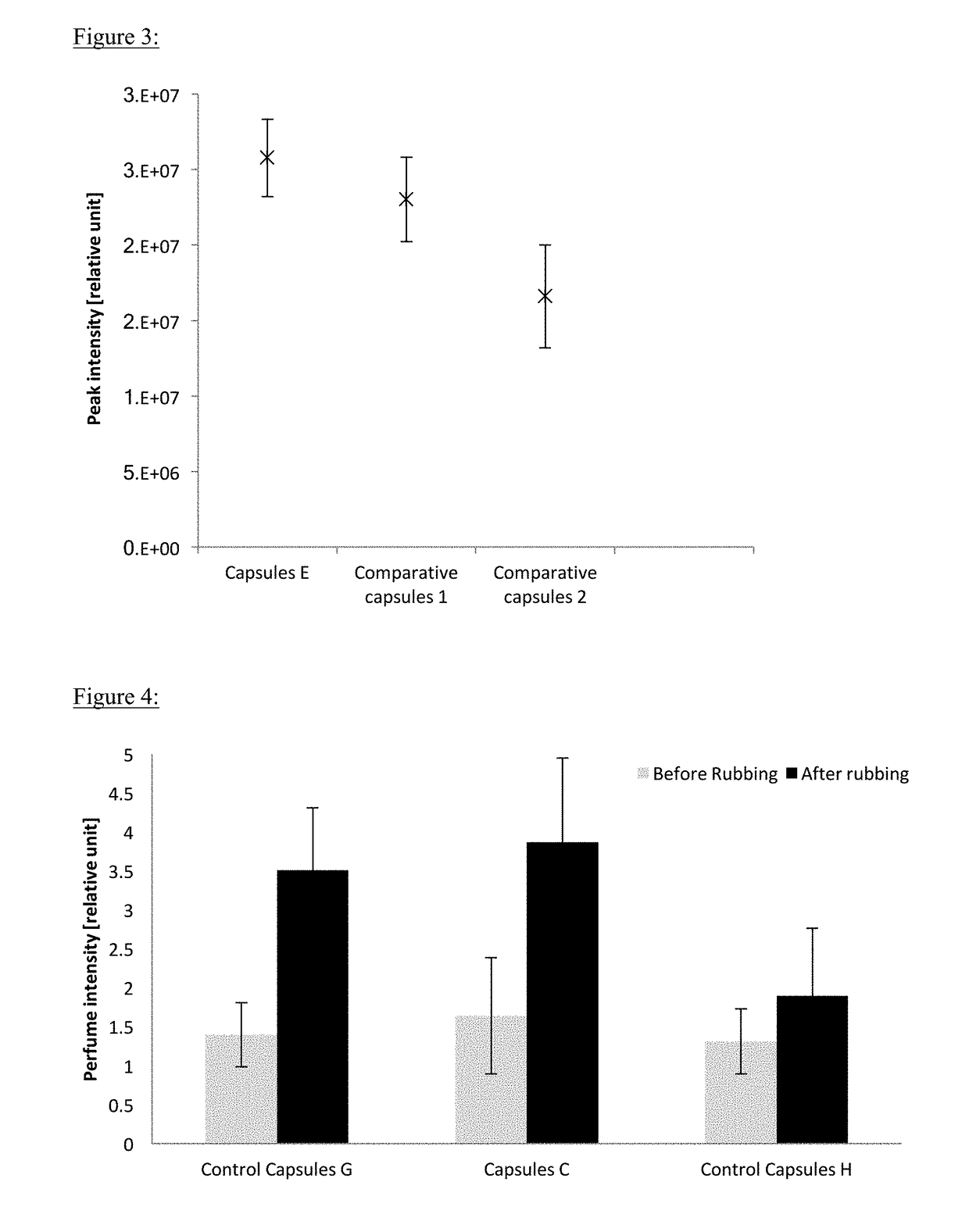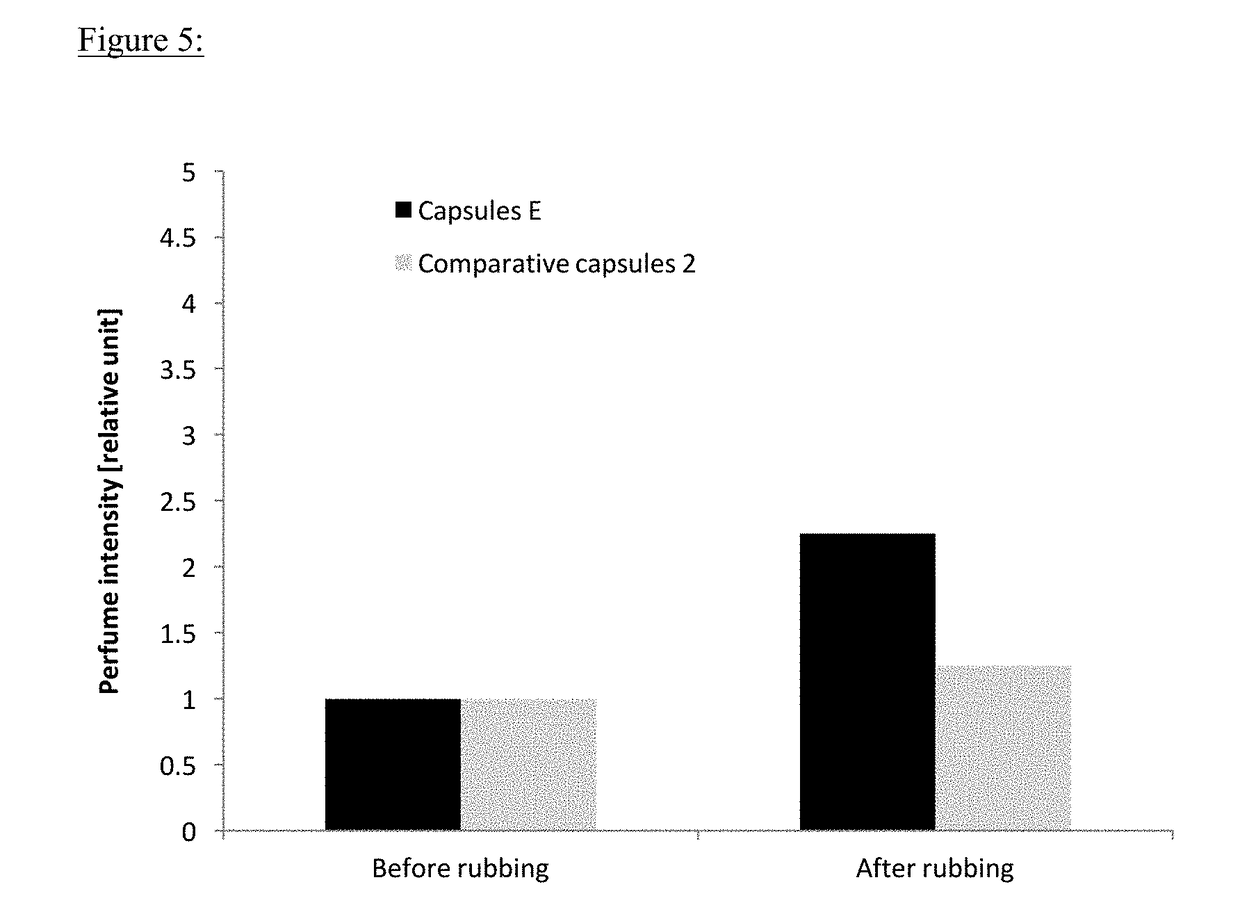Process for preparing polyurea microcapsules
a microcapsule and polyurea technology, applied in the field of delivery systems, can solve the problems of suffering from stability problems, and relative rapid loss of the olfactive benefit of odoriferous compounds, and achieves the effects of improving the stability of oil core-based microcapsules, reducing the efficiency of capsules, and good olfactive performan
- Summary
- Abstract
- Description
- Claims
- Application Information
AI Technical Summary
Benefits of technology
Problems solved by technology
Method used
Image
Examples
example 1
Preparation of Polyurea Microcapsules According to the Present Invention and Control Microcapsules
[0124]General Procedure Polyisocyanate was diluted into a perfume oil (Table 1) to form an oil phase. Polyvinyl alcohol (Mowiol® 18-88, trademark from Kuraray) was diluted in water. The oil phase and the aqueous PVOH solution were mixed together, and then dispersed with Ultra Turrax for 3 min at 24 000 rpm. The emulsion was put into a 250 mL glass double-jacketed reactor and agitated at 350 rpm at room temperature. A solution of guanidine carbonate and 3,5-diamino-1,2,4-triazole (known also under name guanazole) in water was added dropwise into the emulsion for 1 h. Then, the temperature of the reaction mixture was slowly increased from room temperature to 70° C. in 4 times every 15 minutes (RT; 40° C.; 50° C.; 60° C.; 70° C.) and then kept at 70° C. for 2 h. Finally, the agitation was reduced at 100 rpm and the dispersion was cooled down to room temperature.
TABLE 1perfume oil compositi...
example 2
[0127]Olfactive Performance of Capsules According to the Invention Compared with Control Capsules
Procedure for Microcapsules Deposition on Cotton
[0128]A square of cotton fabric (12 cm×12 cm) was cut. A deposit zone was delimited in form of 10 centimeters diameter circle. For each capsule, four samples were analyzed in order to obtain a statistic measurement. Each dispersion of microcapsules was diluted 100 times in water. Diluted dispersion (1 g) was deposited into the circle on the fabric, from the edges to the center. Fabric was left to dry for 24 h.
Measurement of Perfume Release after Rubbing
[0129]AFFIRM® is a single quadrupole mass spectrometer fitted with an APCI (atmospheric chemical ionisation source and an MS-Nose interface). The operating parameters used throughout the course of these experiments are given below.
Source Temperature105°C.Heated transfer line150°C.Heated Nitrogen transfer line105°C.Sampling flow rate50mL / minSource gas flow rate10L / minIonisation voltage3.8kVCon...
example 3
Comparative Capsules Prepared According to a Process Described in US2013 / 0313734
[0133]● Comparative Capsules 1 were Prepared as Follows
Polyisocyanate (Takenate® D-110N, 5.70 g) was diluted into a perfume oil (Table 1, 22.90 g) to form an oil phase. A solution of polyvinyl alcohol (Mowiol® 18-88, trademark from Kuraray, 1 wt %, 34.50 g) was prepared in water to form the aqueous phase. The oil and aqueous phases were mixed together, and then dispersed with Ultra Turrax for 2 min at 24 000 rpm. The resulting emulsion was put into a 250 mL glass double-jacketed reactor and agitated at 350 rpm. A solution of guanidine carbonate in water (15 wt %, 4.13 g) was added and the emulsion was warmed up to 70° C. and then kept at this temperature for 2 h. A solution of 3,5-diamino-1,2,4-triazole in water (20 wt %, 9.44 g) was added into the emulsion which was stirred at 70° C. for 4 hours. The reaction mixture was finally cooled down to room temperature.
[0134]● Comparative Example 2 were Prepared...
PUM
| Property | Measurement | Unit |
|---|---|---|
| pressure | aaaaa | aaaaa |
| diameter | aaaaa | aaaaa |
| diameter | aaaaa | aaaaa |
Abstract
Description
Claims
Application Information
 Login to View More
Login to View More - R&D
- Intellectual Property
- Life Sciences
- Materials
- Tech Scout
- Unparalleled Data Quality
- Higher Quality Content
- 60% Fewer Hallucinations
Browse by: Latest US Patents, China's latest patents, Technical Efficacy Thesaurus, Application Domain, Technology Topic, Popular Technical Reports.
© 2025 PatSnap. All rights reserved.Legal|Privacy policy|Modern Slavery Act Transparency Statement|Sitemap|About US| Contact US: help@patsnap.com



